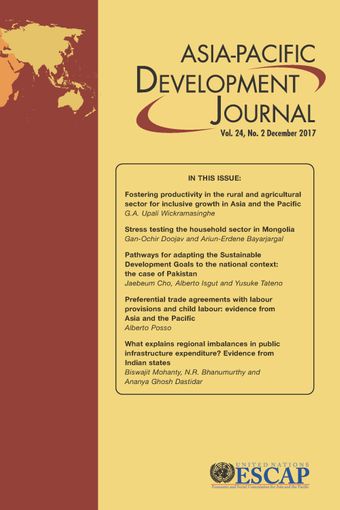-
Preferential trade agreements with labour provisions and child labour: evidence from Asia and the Pacific.
- Source: Asia-Pacific Development Journal, Volume 24, Issue 2, Jan 2018, p. 89 - 111
-
- 31 Jan 2018
Abstract
Many argue that the benefits of trade liberalization do not equitably accrue to everyone. To counter this trend, some governments have proposed adding labour provisions in preferential trade agreements. The eradication of child labour is included in most of those agreements. Using unique new data, the present study is an assessment on whether preferential trade agreements with labour provisions have resulted in less child labour in 18 developing economies in the Asia-Pacific region over the period 1997-2014. The analysis reveals that countries with more preferential trade agreements with labour provisions have lower incidences of child labour. Robustness exercises, however, show that those trade policies are unlikely to reduce child labour and that instead, improving educational access is likely to lower this phenomenon. Accordingly, governments tend to sign those agreements after labour market conditions improve. This is useful in that it signals to other countries their concern about labour standards, which have been found to increase foreign direct investment. Alternatively, signing those preferential trade agreements can protect their own labour markets from a potential race to the bottom.




